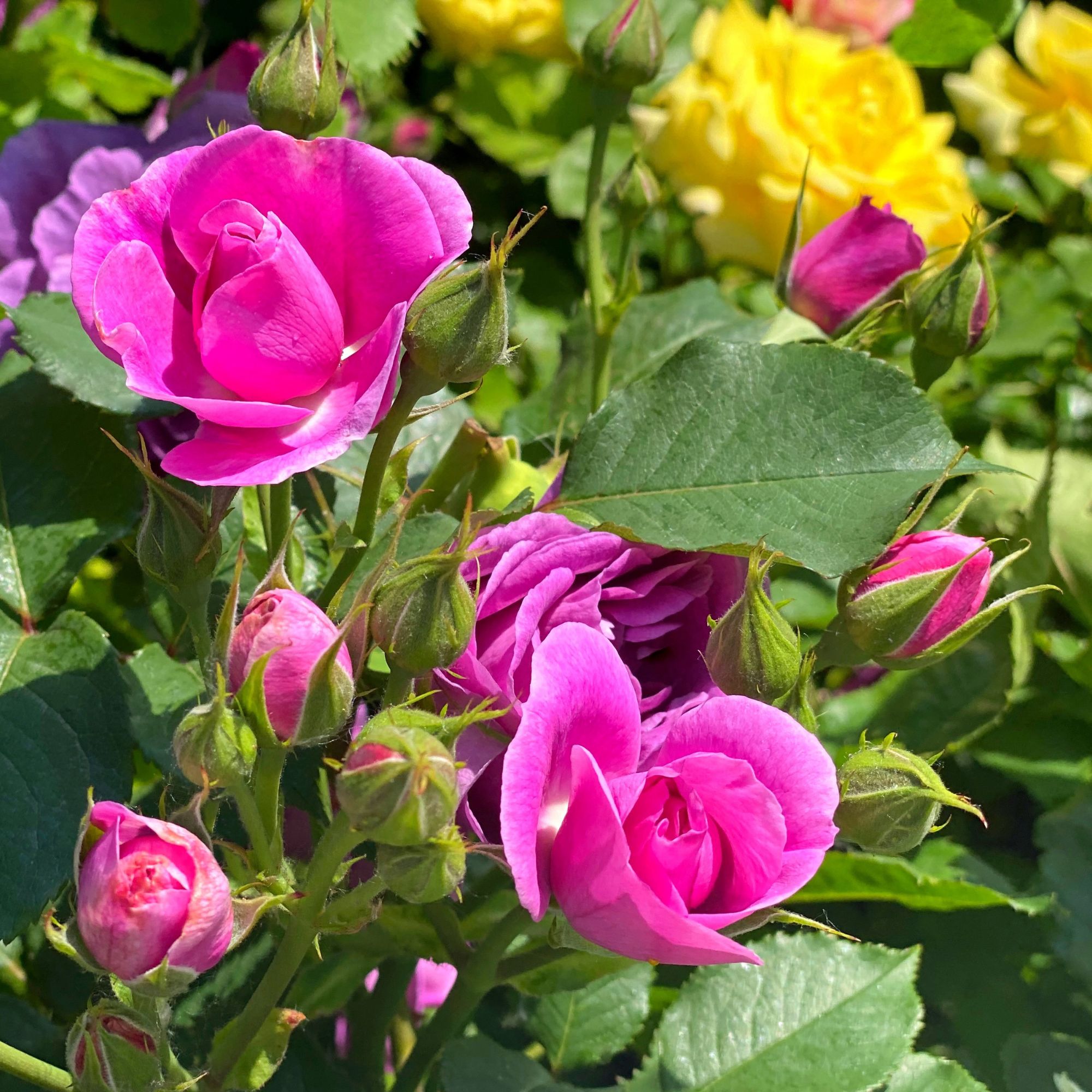
Synonymous with romance, passion, and love, you probably don’t need us to tell you that roses are some of the most beautiful flowers out there. But as they’re often afflicted by rose problems and diseases, this can be enough to make you fall out of love with them if you don’t know how to fix them.
Yes, most people want to know how to grow roses - and we can understand why. Ideal for any garden idea, they’ll work perfectly in a cottage garden, and the best roses for a small garden allow anyone and everyone to grow these blooms. However, growing roses isn’t as easy as you’d think.
Even the most robust blooms are vulnerable to common rose problems and diseases, and prolonged exposure to these problems could result in the demise of your rose garden. Thankfully, we’ve got everything you need to know about these problems and what you can do to fix them. After all, we'd hate for you to break up with your beloved roses.
Common rose problems and diseases
‘Unfortunately, diseases and other issues are common in roses, but luckily, the majority of them can be prevented with proper rose care,’ explains John Clifford, a garden expert from Gardenstone. ‘All rose varieties require slightly different care, so it's important to make sure you do research on how to properly care for your specific variety of rose before you plant and take care of it.’ But if you’re struggling with rose problems and diseases, keep reading.
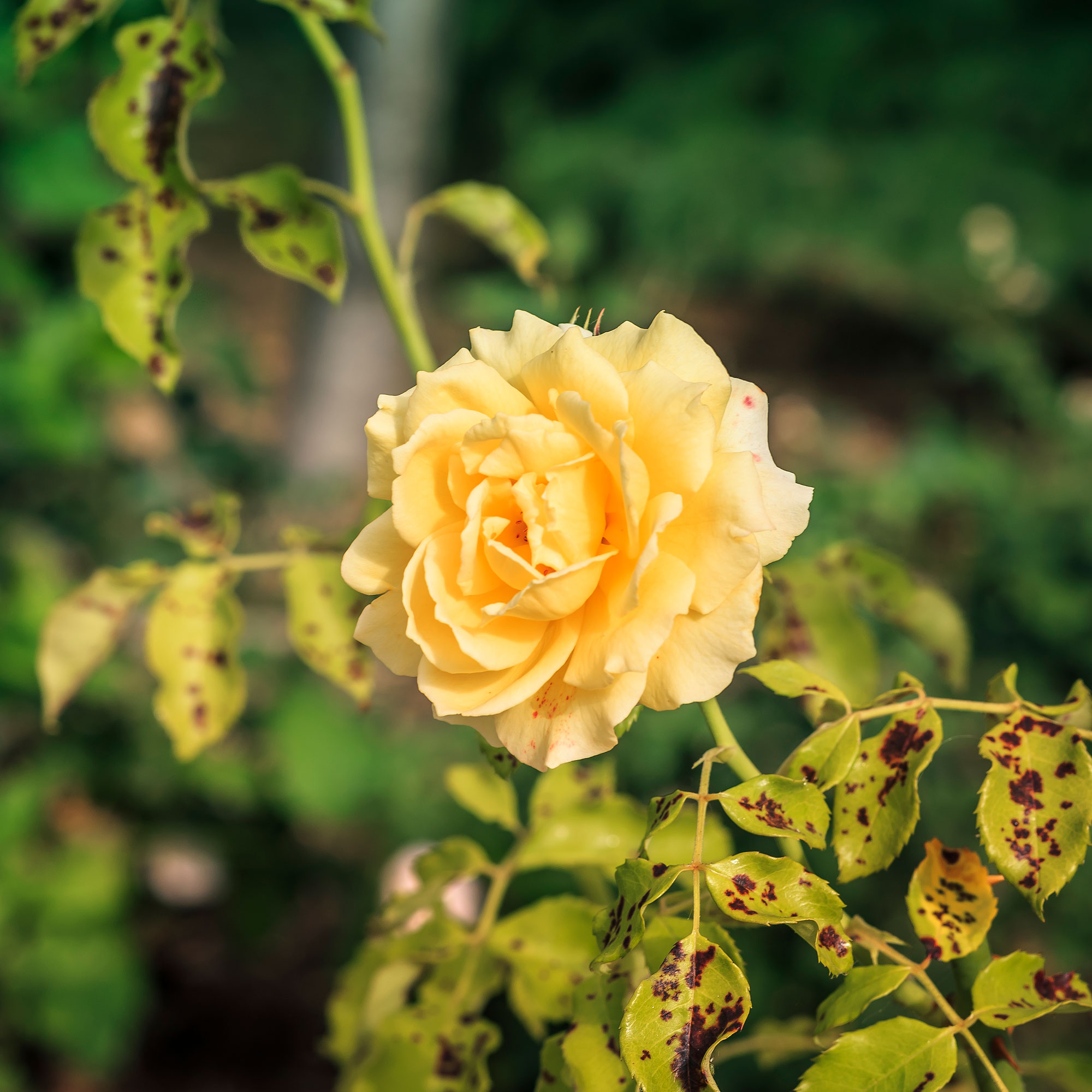
1. Black spot on roses
One of the most common rose problems is black spot - and it’ll be pretty obvious if your once-beautiful roses have been afflicted by this fungal disease.
Morris Hankinson, director of Hopes Grove Nurseries explains, ‘Black Spot is a very common problem with roses, identified by the recognisable black (or dark purple) spots that appear on the leaves. It's caused by a fungus and can mean that infected leaves drop off.’
Unfortunately, black spot can be fatal, and in many cases, the plant may succumb to this disease. There are some things you can do to prevent the spread of this disease, though.
Solution: Although fungicides (like this Miracle-Gro Roseclear Insecticide from Amazon) can be used to treat rose black spot, this common rose problem can often be treated naturally.
Morris advises, ‘Where possible, collect up and destroy any infected and fallen leaves as they could spread the disease. Black spot also thrives in wet conditions, so try to water your roses from the base and directly into the soil, rather than watering the leaves.’
In fact, you could even utilise the handy qualities of self-watering plant pots to prevent black spot in roses.
This elho flower pot can be used both indoors and outdoors, meaning you'll never overwater or underwater your plants again.
2. Aphids on roses
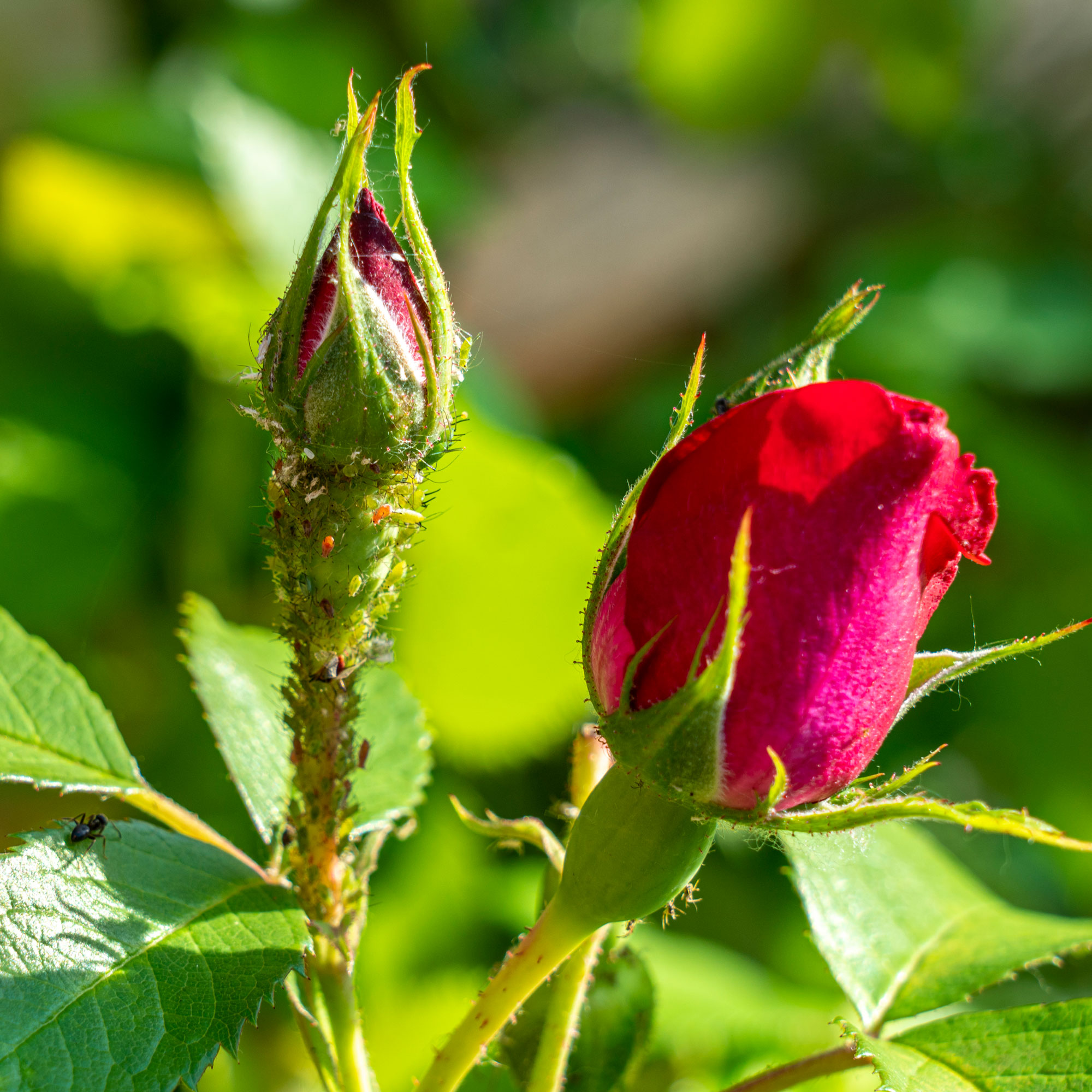
Roses are stunning, right? Well, we’re not the only ones who think so, as aphids are also attracted to these beautiful blooms. However, these pests can be a serious problem for roses.
‘Even though they're small, they can still do a lot of damage to your roses as they take the sap out of leaves, stems and buds, which can impact the plant tissue,’ says Morris. ‘They also produce a substance called honeydew, which can negatively affect plants and lead to sooty mould.’
But while aphids can be a nuisance, it’s relatively easy to spot aphids on your roses - which means that you can act fast to solve this common rose problem.
Solution: ‘You don't need to use chemicals to remove aphids,’ says Morris. ‘Instead, a strong spray water can disrupt them (you can even add a liquid soap solution to your water).’
But that’s not all. You can also use ladybirds to control aphids, and many birds also love eating aphids as a snack. So, buy a bird feeder like this Fallen Fruits Complete Bird Feeding Kit from Dunelm to try to attract as many birds as possible.
A spray bottle will make it easier than ever to banish the aphids on your roses, and it's always handy to have around the house, too.
3. Rust on roses
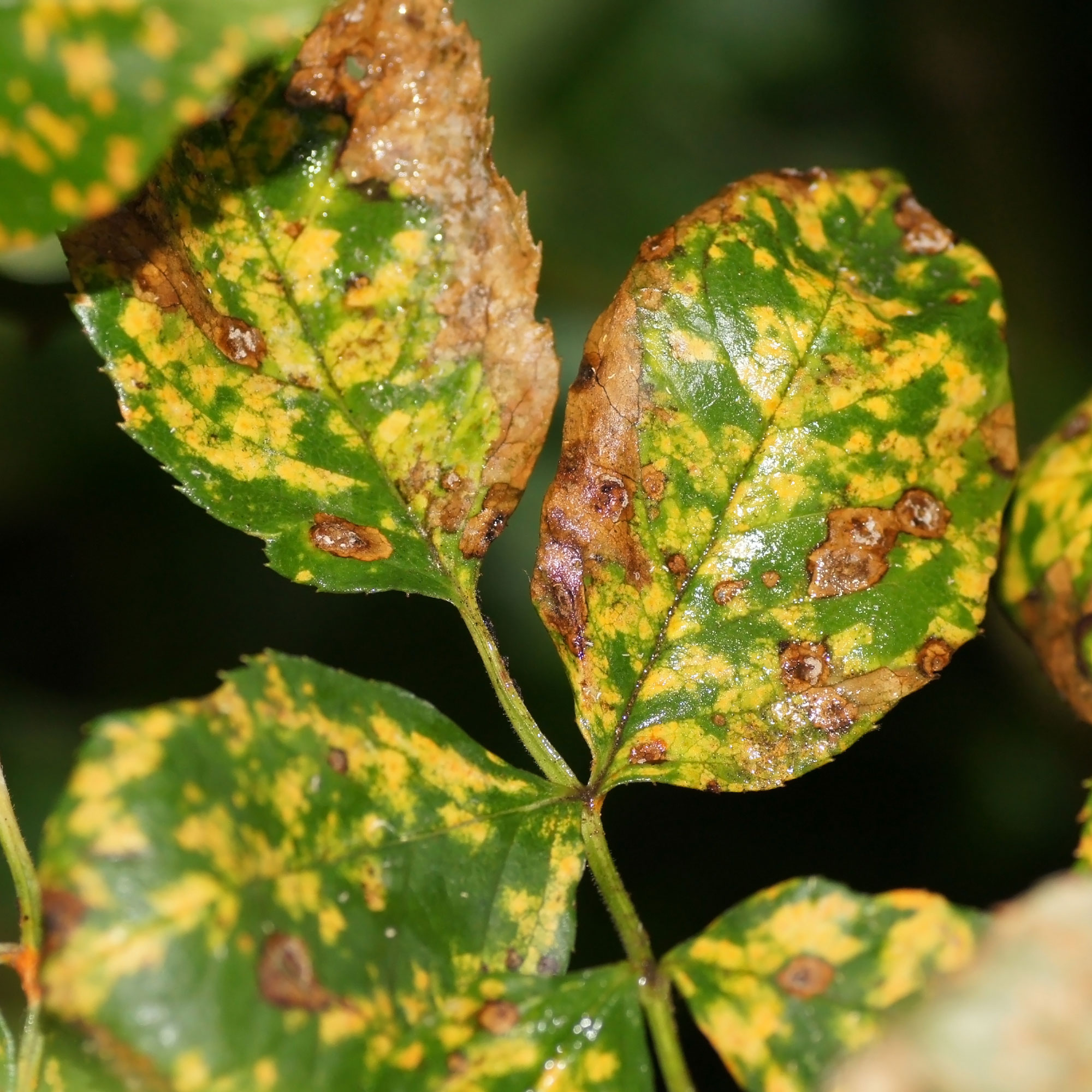
When you think of rust, you probably think of old metals. But a common rose problem is rose rust - and this looks exactly how you’d imagine it. The leaves of the rose have rusty-looking orange-black pustules, and these are normally found on the underside of the leaves.
This rose rust is caused by a fungus and is more common in older roses than in modern varieties. However, it’s still worth keeping an eye out for rose rust and act as soon as you spot the first signs of it.
Solution: Although you can use a fungicide to fix rose rust, most experts would advise against this. Instead, cut off the infected leaves as soon as possible to prevent the spread. In extreme circumstances, you may need to remove the rose entirely and swap it for a younger plant.
In fact, Pim Dickson from DT Brown Seeds explains, ‘Much development work has gone in to producing new, more disease resistant roses with all the fragrance and appeal of traditional types and these are well worth seeking out.’
No gardener would be completely without some secateurs, and these McGregor secateurs will help you complete all of your gardening jobs with ease.
4. Powdery mildew on roses
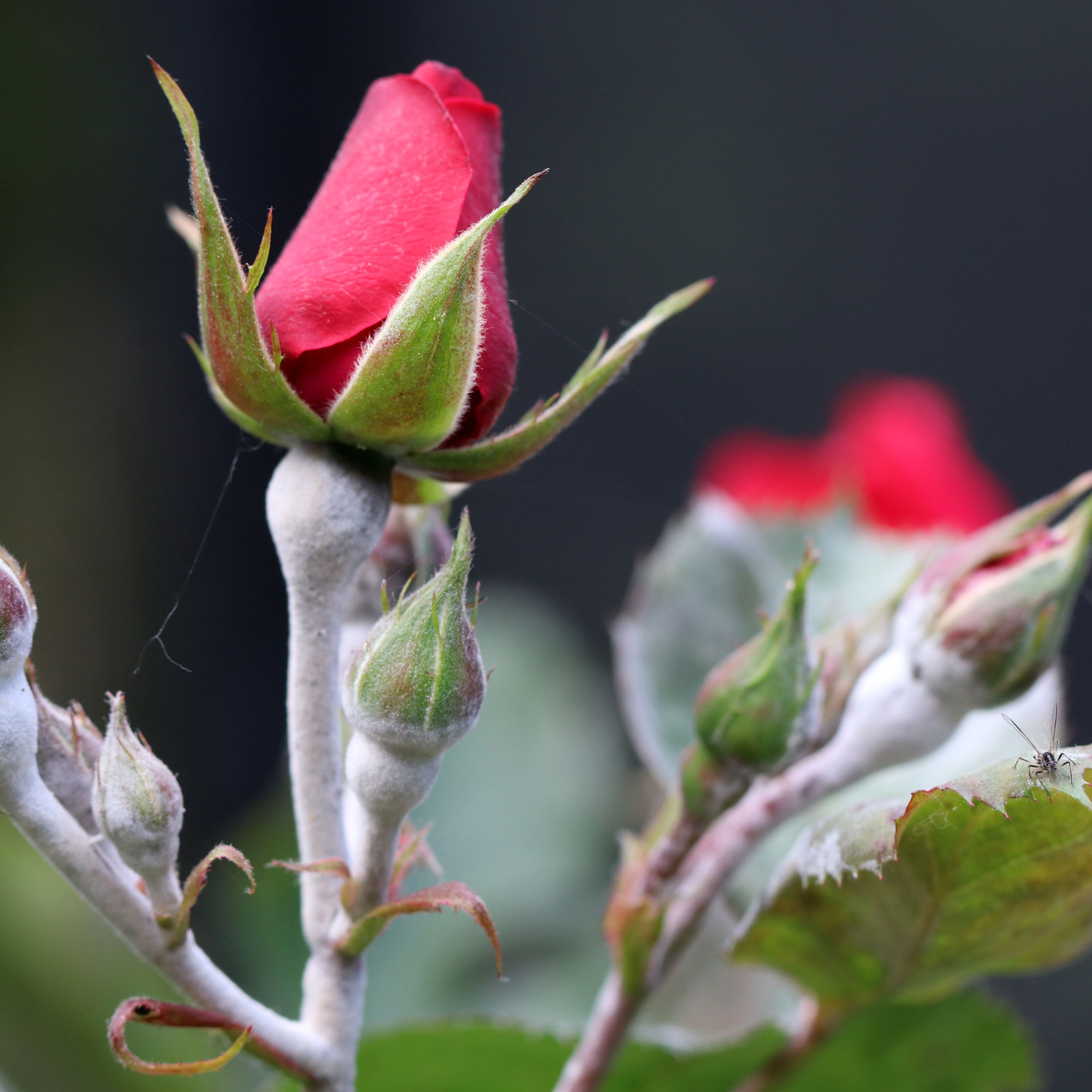
Sadly, one of the most common rose diseases is powdery mildew - and while this can devastate your beloved roses, it’s relatively easy to spot. The most visible indicator of powdery mildew is a white, powdery substance on the leaves and stem of your rose plant.
You should also keep your eyes peeled for stunted growth, discoloured leaves, and curled leaves. In severe cases, you may notice that young flower buds don’t open at all.
Solution: As powdery mildew is often caused by high humidity and a lack of airflow, it’s relatively easy to treat. Morris says, ‘You can prevent powdery mildew by increasing airflow, allowing for an adequate distance between the plants (no leaves touching) and decreasing the humidity.'
He also adds, ‘Home ingredients such as baking soda and milk can also help prevent powdery mildew. If using baking soda, mix with water and liquid soap, then spray onto your roses. If using milk, dilute it with water and pour the mixture onto your roses!’
Who knew you could use baking soda in the garden, too? This cleaning essential will help you tackle the powdery mildew on your roses.
5. Dieback of roses
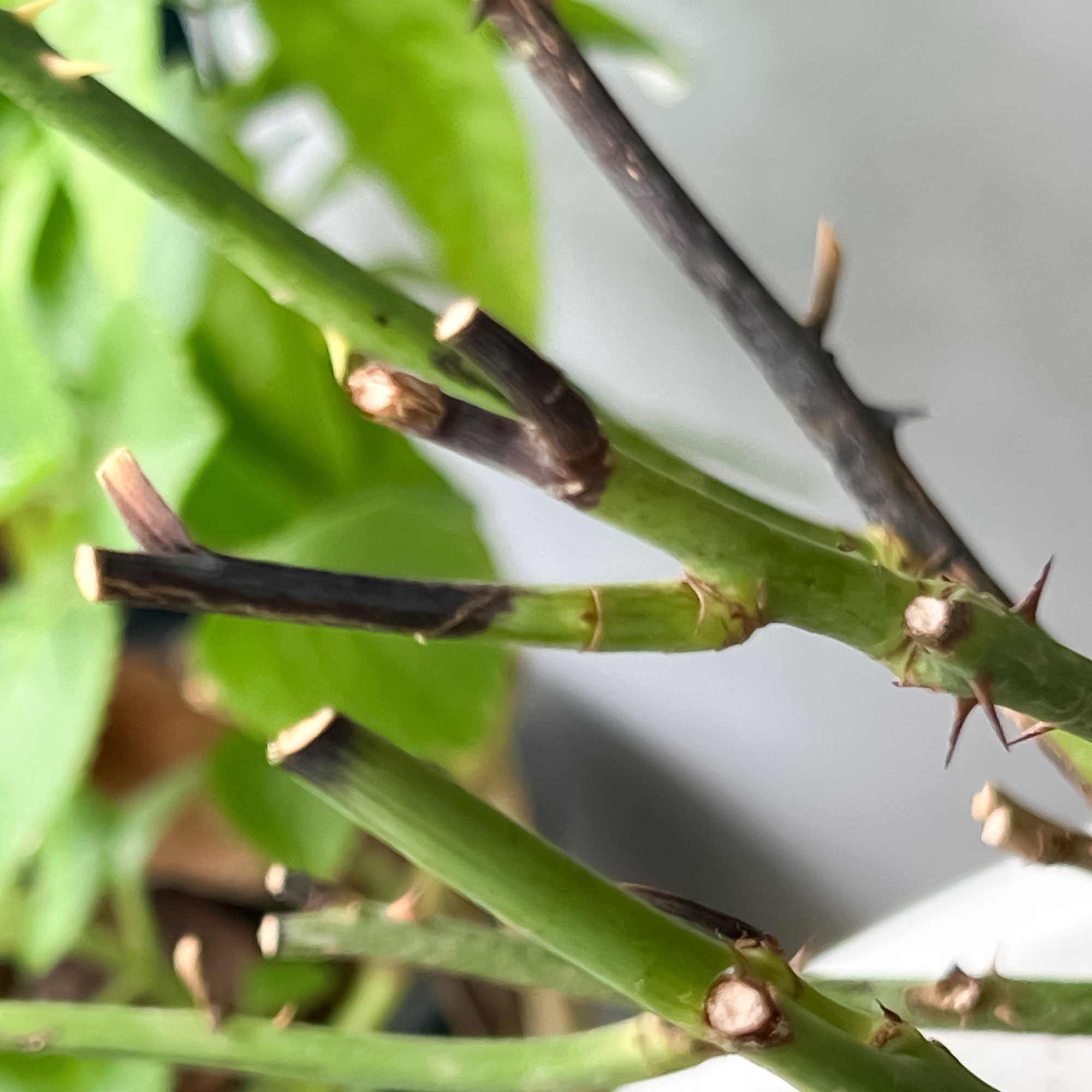
There's nothing worse than seeing your once-beautiful roses afflicted by problems and disease - and if the tips of your rose branches or stems are turning brown or black, it’s likely suffering from rose dieback.
It’s hard to pin this common rose problem on one particular cause, but experts suggest that it could be due to incorrect rose pruning, poor weather conditions, fungal diseases, and general plant stress. If left too long, this dieback can have a serious effect on the plant.
Solution: As it’s hard to pinpoint the exact cause of rose dieback, it’s best to try a few different solutions for this common rose problem. Firstly, fertilise your roses to improve soil health and the overall well-being of the plant. Removing the parts of the rose afflicted by the dieback is also a good idea as this will stop it from spreading.
If you're struggling with rose problems - or you just want to give your healthy rose bush a boost - this fertiliser has got you covered.
6. Sawflies on roses
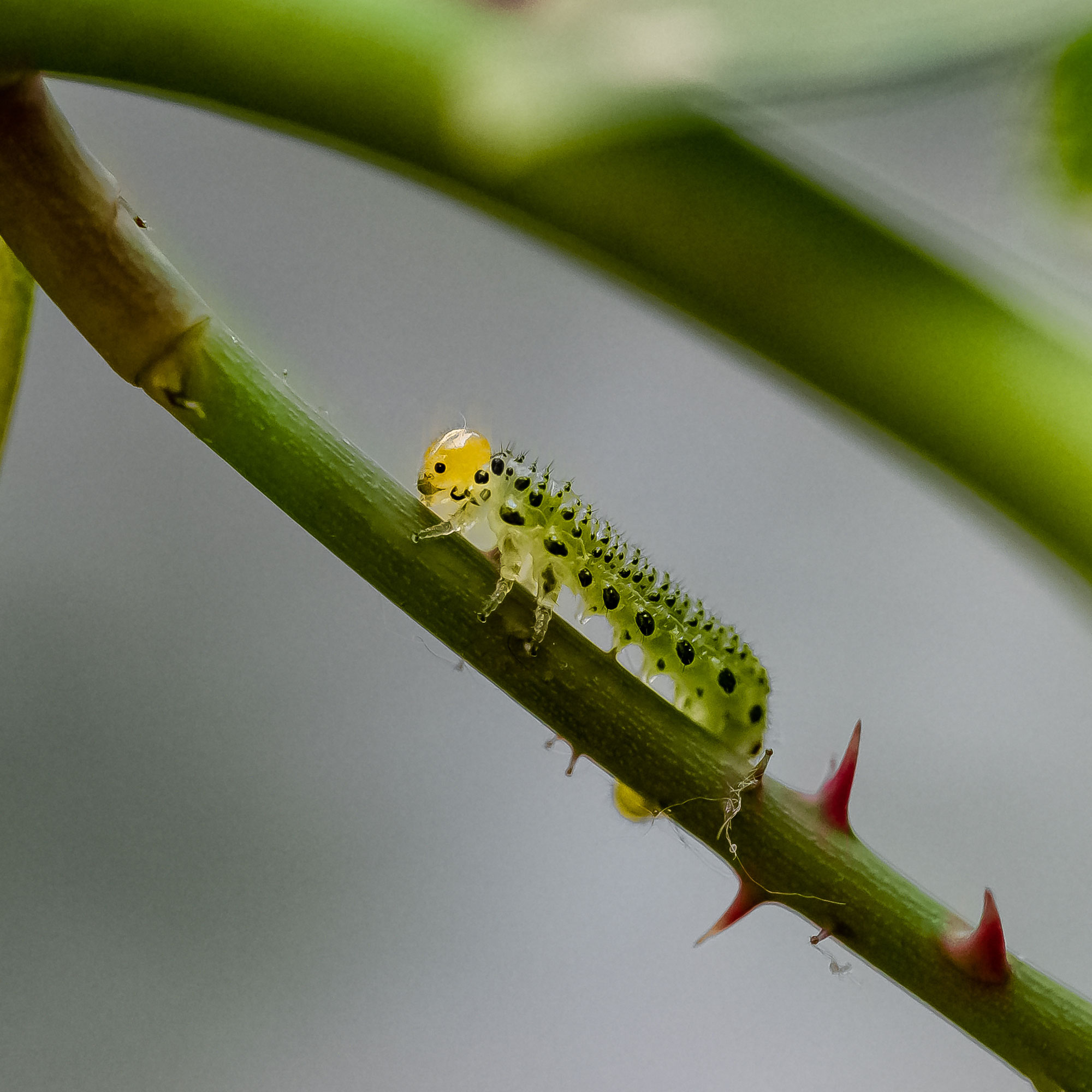
Unfortunately, sawflies absolutely love roses, and it’s not uncommon for gardeners to find both rose-leaf rolling sawflies and rose slug sawflies on their plants. A sure sign that you have sawflies on roses is spotting rolled-up leaves on your rose plant.
And if you dare look inside, you might even see eggs and larvae that look a bit like caterpillars.
If you leave them be, sawflies will eat the roses of your leaves and leave you with a rather bare plant. And while they won’t affect the overall health of your rose plant, they can affect the aesthetics - so it’s best to deal with them promptly.
Solution: If you only have a small population of sawflies, you could get away with leaving them be. But if you start to notice a larger infestation, you can try removing them by hand and transferring them elsewhere. Remember to use gloves when doing this.
If you don’t want to move them by hand, encouraging the sawfly’s natural predators can be a quick and easy way to control the population. In fact, most birds will eat sawflies, so try adding a few more bird feeders into the mix.
If you want to prevent the spread of disease in your garden, a pair of gardening gloves is a must.
FAQs
How do you identify a rose problem?
The best way to identify a rose problem is to inspect the rose and look for abnormalities. These may include discolouration, dieback, visible pests, and stunted growth.
When you spot these abnormalities, you should then be able to trace these symptoms back to a common rose problem or disease. Then, you can focus on treating that specific rose problem and restoring your rose back to full health.
What does a sick rose bush look like?
As rose bushes are considered incredibly beautiful, spotting a sick rose bush is normally fairly easy. The blooms may look smaller than usual, the stems may have turned brown or black, and the leaves may be coloured in rust or black spots.
It’s important to inspect a rose bush properly, though, and research the specific symptoms to find the solution. In most cases, the rose bush may simply require a trim to cut off the diseased sections. In rare cases, however, you may have to remove the sick rose bush completely.
Do your roses have any of these common rose problems or diseases? Well, hopefully they won't for much longer...







